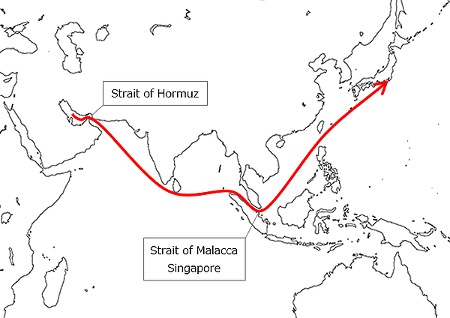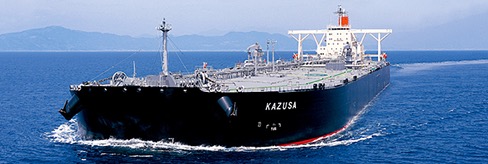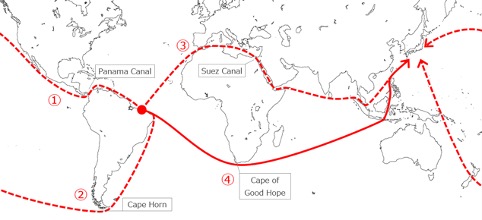Let’s see the transport of crude oil from the Middle East to Japan, sailing from the port of Ras Tanura in Saudi Arabia to Tokyo Bay.
In this case, it is not possible to connect the two points by a great circle, the tanker leaving Ras Tanura in the Persian Gulf would pass through the Strait of Hormuz, enter the Indian Ocean, pass through the straits of Malacca and Singapore, and sail through the Pacific Ocean to Tokyo Bay.

The navigation distance on this route is approximately 6,600 miles, so the crude oil tanker navigating at 14 knots would require about 470 hours (19.5 days). In fact, most of the crude oil shipped from the Middle East to Japan is imported by very large crude carriers, known as VLCCs, which take about 20 days each way, 45 to 50 days per voyage, including the time required for loading and unloading.
The 300,000 tons of crude oil, imported from the Middle East by the VLCC, is equivalent to about 12 hours of Japan's oil demand and is refined into gasoline and various other petroleum products at oil refineries.

Next, Let’s see the route to transport iron ore, a raw material for steel products, from Brazil to Japan.
Since Brazil locate almost on the other side of the globe from Japan, there are four possible routes:
Westbound:
Eastbound:

The shortest route is ①, which passes through the Panama Canal and navigates the Great Circle to Japan. However, this route is not chosen for iron ore shipment due to the limited size of ships that can pass through the canal and the high cost of canal tolls.
Route ➁ requires passing through the Drake Passage, located between Cape Horn, the southern tip of South America, and Antarctica. However, the Drake Passage locate beyond 55 degrees south and has long been known as one of the worst waters due to the year-round storms, high waves exceeding 15 meters, and strong currents, and this route is not chosen commonly.
When considering an eastbound voyage from Brazil, the route through the Suez Canal in ③ would not be an economical route, just like the Panama Canal, considering the ship size restrictions and the canal tolls.
Therefore, when transporting iron ore from Brazil to Japan, the route via the Cape of Good Hope at the southern tip of Africa in ④ is commonly chosen, and the navigation distance will reach around 12,000 miles each way (almost 40 days at 13 knots).
On this route, which takes almost 3 months for a round trip, including the days required to load and unload the cargo, ships are becoming larger to improve transport efficiency. And a super-large iron ore carrier called Vale Max, which can intake 400,000 tons of iron ore at a time, has been introduced.